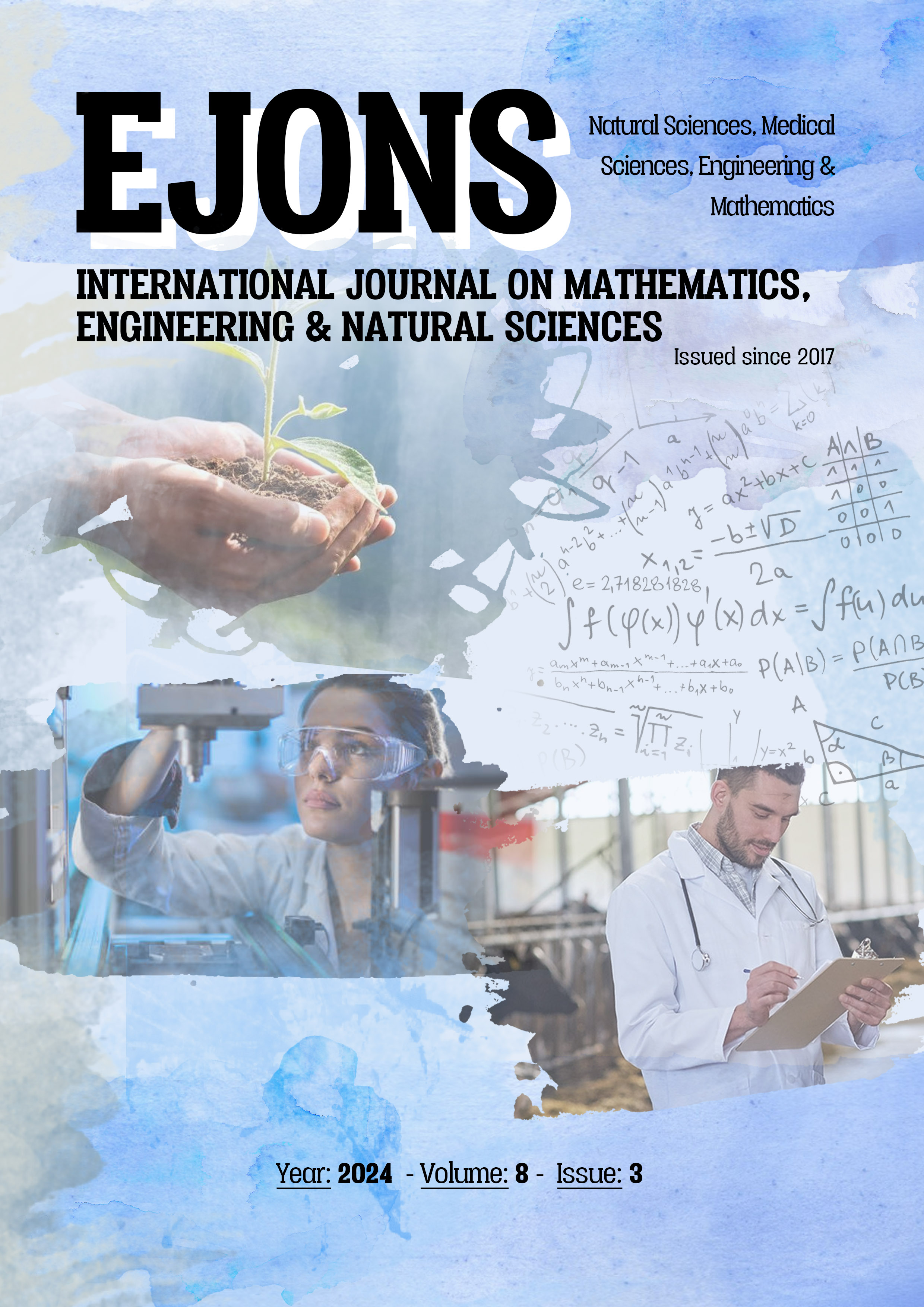CuO Additive Pigment Production and Industrial Application
DOI:
https://doi.org/10.5281/zenodo.13768146Keywords:
Pigment, Olivine, Copper oxideAbstract
In this study, copper oxide was added to the main raw material olivine mineral as a metal oxide activator to investigate the colour effect in inorganic based pigment production. Copper oxide activator was added into the prepared pigment recipes in the range of 0-9%. In addition, three different boron-based mineralisers (Boric acid, Calcined Borax and Calcium Borate) were selected and used in the pigment preparation process.
All prepared recipes were kept at three different calcination temperatures (1150 oC, 1200 oC and 1250 oC) for one hour and pigment production processes were completed. Copper oxide metal-added pigments produced by the traditional pigment production method were prepared on industrial wall tile bodies and industrial wall tile glaze application and the effectiveness of the pigments was completed under industrial rapid firing conditions.
Metal oxide activation, mineraliser activation and pigment firing temperature activation in wall tile glazes coloured with copper oxide added pigments were characterised.
Visual parameters such as colour change and surface smoothness were investigated in terms of both surface and characterisation by comparing the effect of 0% and 9% copper oxide addition between the pigment added wall tile glaze recipes. It is seen that colour efficiency increases with temperature in all recipes. The best calcination temperatures were found to be 1200 °C and 1250 °C. As mineralisers, calcium borate and calcined borax mineralisers were evaluated to have better effects than boric acid mineralisers. However, due to the impurities in olivine natural raw material, the intensity of brown colour could not be obtained as much as commercial brown pigments.
References
Yıldızay H., Taşçı, E. (2021), Ni-Co Kompozit atığının stoneware bünyelerde mekanik özelliklere etkisinin incelenmesi, 6nd International Conference on Material Science and Technology in
Jansen M. and Letschert H.P. (2000). Inorganic Yellow-Red Pigments without Toxic Metals, Nature, 404, 980-982.
Kingrey W.D.and Bowen H.K. (2000), Introduction to ceramics; Published By John Wiley&Sons, New York,.
Sulcova P. and Trojan M. (2003). Study of Ce1-xPrxO2 Pigments, ThermochimicaActa, 29, 251-257.
Yuan J. , Xing W. , Gu G. , Wu L. , 2008, The properties of organic pigment encapsulated with nano-silica via layer-by-layer assembly technique, Dyes Pigments, 76 (2008), pp. 463-469
Gueli A.M., Pasquale, G., Troja S.O. , 2017, Effect of particle size on pigments colour, Color Res Appl, 42 (2017), pp. 236-243
Bayer Z., Atay B., Ay N., Çakı M. “Ferrokrom uçucu külünün duvar karosu sırındaki renk etkileri”, Afyon Kocatepe University Journal of Sciences and Engineering, Special edition, 89-94,2009. http://dergipark.gov.tr/download/article-file/18743 14.
Eppler R. A. and Eppler D. R., Glazes and Glass Coatings, Am. Ceram. Soc., Hong Kong, 2000.
Ozel E., Turan S., 2003, Production and characterization of iron-chromium pigments and their interactions with transparent glazes. J. Eur. Ceram. Soc., 23 (2003), pp. 2097-2104
Eren E., “Fe2O3 içeren hammaddenin şeffaf sırı renklendirme etkisi, Dicle University Journal of Engineering, 8, 4, 865-870, 2017.
Malshe VC, Sikchi MA. (2002)."Basics of Paint Technology",Published by VC. Malshe, UICT, Mumbai.
Trojan M. and Novotny M. (1995). Kirk-OthmerEncylopedia of chemical Technology;published by John Wiley&Sons, New York.
Genç C. (2000). Olivin Raporu. İstanbul: İTÜ Maden Fakültesi. Genç, S. (2013). Artistik Seramik Sırları Sır Sanatı. Boyut Matbaacılık.
Sevim K. (2006). 1200°C Sıcaklıkta Gelişen Bakır Kırmızısı Sırlar. Sanatta Yeterlik Tezi. Eskişehir: Anadolu Üniversitesi Sosyal Bilimler Enstitüsü.
Kaya S. Y., Karasu B., Karacaoğlu E., General Review of Application of Phosphorescence Pigments in Ceramic Industry, the Proceedings of SERES’09 I. International, Ceramic, Glass, Porcelain Enamel, Glaze and Pigment Congress, Eskisehir, Türkiye, 608–616, 2009.
Mirdalı K., 2017. Inorganic Wastes in Glaze Recipes and Their Effects on Microstructure, Journal of the Australian Ceramic Society, 53(2), 713-718. https://doi.org/10.1007/s41779-017-0084-0.
Genç S., Kurt T., 2017. Etibank Bandırma Boraks Fabrikası Atığının Aventurin Sır Bünyelerinde Alternatif Hammadde Olarak Kullanımı, Art-E Sanat Dergisi, 10(19), 187-202.
Zanelli C., Raimodo M., Dondi M., Guarinin G., Cavalcante T. (2004). Sintering mechanisms of porcelain stoneware tiles, in: Qualicer 2004 “XV Congr. Mund. La Calid. Del Azulejo Y Del Paviment. Cerámico,” 247–259.
Downloads
Published
How to Cite
Issue
Section
License
Copyright (c) 2024 EJONS INTERNATIONAL JOURNAL

This work is licensed under a Creative Commons Attribution-NonCommercial 4.0 International License.


